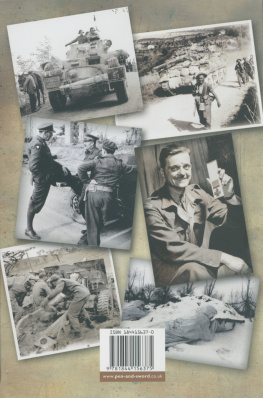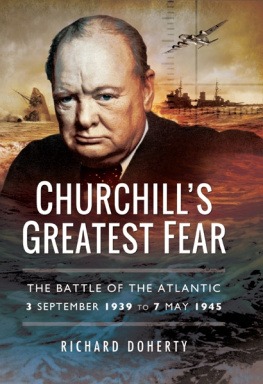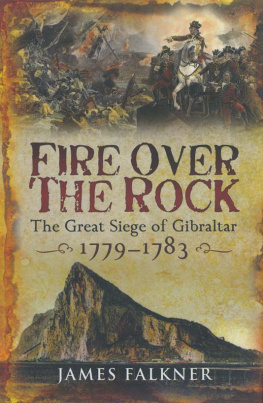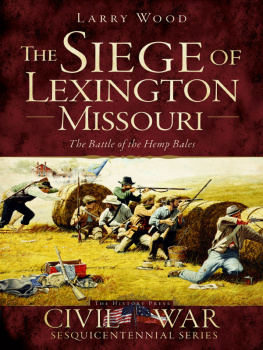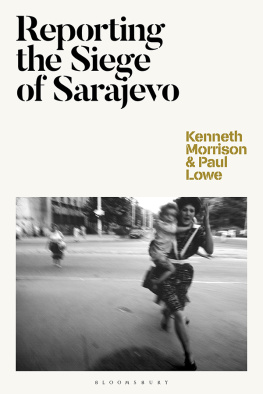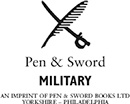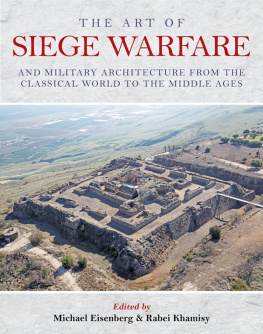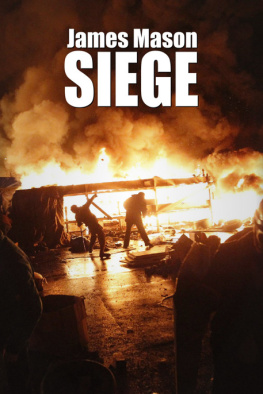
First published 2008
This edition published in 2010 by
Spellmount, an imprint of
The History Press
The Mill, Brimscombe Port
Stroud, Gloucestershire, GL5 2QG
www.thehistorypress.co.uk
This ebook edition first published in 2016
All rights reserved
Richard Doherty, 2008, 2010
The right of Richard Doherty to be identified as the Author of this work has been asserted in accordance with the Copyrights, Designs and Patents Act 1988.
This ebook is copyright material and must not be copied, reproduced, transferred, distributed, leased, licensed or publicly performed or used in any way except as specifically permitted in writing by the publishers, as allowed under the terms and conditions under which it was purchased or as strictly permitted by applicable copyright law. Any unauthorised distribution or use of this text may be a direct infringement of the authors and publishers rights, and those responsible may be liable in law accordingly.
EPUB ISBN 978 0 7509 8063 0
Typesetting and origination by The History Press
eBook converted by Geethik Technologies
Dedication
For Danny McLaughlin
Who taught better than he knew, and enriched many young lives.
Ill have you learn to sleep upon the ground,
March in your armour through watery fens,
Sustain the scorching heat and freezing cold,
Hunger and thirst right adjuncts of the war,
And after this to scale a castle wall
Besiege a fort, to undermine a town,
And make whole cities caper in the air
Christopher Marlowe
(Tamburlane, to his sons)
Contents
By the same author
Wall of Steel: The History of 9th (Londonderry) HAA Regiment, RA (SR), North-West Books, Limavady, 1988
The Sons of Ulster: Ulstermen at War from the Somme to Korea, The Appletree Press, Belfast, 1992
Clear The Way! A History of the 38th (Irish) Brigade, 194147, Irish Academic Press, Dublin, 1993
Irish Generals: Irish Generals in the British Army in the Second World War, The Appletree Press, Belfast, 1993
The Williamite War in Ireland, 16881691, Four Courts Press, Dublin, 1998
Irish Men and Women in the Second World War, Four Courts Press, Dublin, 1999
Irish Winners of the Victoria Cross (with David Truesdale), Four Courts Press, Dublin, 2000
Irish Volunteers in the Second World War, Four Courts Press, Dublin, 2001
The Sound of History: El Alamein 1942, Spellmount, Staplehurst, 2002
The North Irish Horse: A Hundred Years of Service, Spellmount, Staplehurst, 2002
Normandy 1944: The Road to Victory, Spellmount, Staplehurst, 2004
Irelands Generals in the Second World War, Four Courts Press, Dublin, 2004
The Thin Green Line: A History of The Royal Ulster Constabulary GC, 19222001, Pen & Sword Books, Barnsley, 2004
None Bolder. The History of the 51st Highland Division in the Second World War, Spellmount, Staplehurst, 2006
The British Reconnaissance Corps in World War II, Osprey Publishing, Botley & New York, 2007
Eighth Army in Italy: The Long Hard Slog, Pen & Sword Books, Barnsley, 2007
A Noble Crusade: The History of the Eighth Army, 19411945, Spellmount, Staplehurst, 2008 new ed.
Only the Enemy in Front. The Recce Corps at War, 194046, Spellmount, Staplehurst, 2008 new ed.
List of Maps
Acknowledgements
I owe thanks to a number of individuals and organisations without whose assistance this book would not have been possible. As the reader will note from the Introduction, I have had an almost life-long interest in the subject, an interest sparked by the late Danny McLaughlin in a school classroom almost a half century ago. Therefore, my first thanks must go to Danny McLaughlin for doing his job as a teacher so well.
More recently, but still almost twenty years ago, Michael McGowan and Frances Campbell welcomed me into the world of historical broadcasting with a series of contributions on the siege in Frances BBC Radio Foyle afternoon programme, which was produced by Michael. In 1989, the tercentenary of the siege, I presented a radio series called The Siege Chronicles, which Michael produced. For their encouragement and support, I thank them both.
Although the siege occurred three centuries ago, there are many contemporary records still extant. These include a number of Admiralty records, among them ships logs, relating to the maritime aspects of the siege. I was able to consult these at the National Archives at Kew where the staff were, as I have always found them, both professional and helpful. Other records survive in the House of Lords Records Office, in the Palace of Westminster, and thanks are also due for the assistance I received there. Yet more contemporary documents reside in the Scottish Records Office in Edinburgh and I am especially indebted to Hazel Weir for her work on my behalf in that institution. The National Army Museum, Chelsea, was another valuable source of information which I acknowledge readily together with the National Gallery of Ireland, Dublin. Finally, I was able to consult contemporary copies of the London Gazette in the British Library Newspaper Library at Colindale, London.
The siege, and the war of which it formed part, spawned a number of books in an early manifestation of a now familiar phenomenon, the recording of participants experiences. I am grateful to Mr Tony Crowe who lent me original copies of some of these books and to the Linenhall Library, Belfast and the Central Library, Foyle Street, Londonderry, for their assistance.
A very special word of thanks must go to St Columbs Cathedral and to the Very Reverend Dean William Morton, Dean of Derry, as well as Daphne and Gerry Gallick, Ian Bartlett and Billy Begley, for access to documents and books in the Cathedrals collection and also for permission to photograph exhibits in the Chapterhouse Museum; some of the photographs grace the pages of this book.
My publisher, Jamie Wilson of Spellmount was a great support, as well as being a good friend, and the editorial and production team, including Shaun Barrington and Clare Jackson, are to be congratulated on their efforts which have resulted in a fine volume.
To my wife Carol, our children Joanne, James and Catrona, and grandson Ciarn, I extend my thanks for constant support and understanding.
Introduction
It is often referred to as the greatest siege in British military history. Indeed, Macaulay called it the greatest siege in English history, going on to say that the wall of Derry remains to the Protestants of Ulster what the trophy of Marathon, or the pass of Thermopylae, was to the Athenians a sacred spot dear to memory, and enkindling by its name the fire of patriotism. The siege is recalled on an annual basis by the Apprentice Boys of Derry, who celebrate the shutting of the gates in December and the relief of the city in August. It is also used as a shibboleth by politicians and others, while some academics consider that the siege continues in a psychological fashion to the present day, with the unionist community in Northern Ireland feeling the sense of isolation that was felt by the defenders of Derry in 1689.
My first awareness of the siege of Derry came as a schoolboy in the city fifty years ago. Our teacher, the late Danny McLaughlin, had written an account of the siege which he read to us on an instalment basis. I was enthralled with the tale he told and can still recall his telling us about Governor Lundy who was prepared to sell the keys of Derry, as Danny McLaughlin put it, for a bap, and of how Captain Browning, commander of the relief ship
Next page

